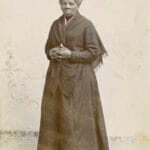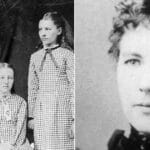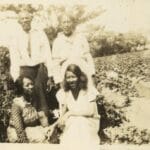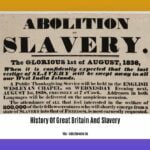Mariah Ritty Ross, older sister of the renowned abolitionist Harriet Tubman, lived a life tragically fragmented by the brutal realities of 19th-century American slavery. Born into bondage in Dorchester County, Maryland, in 1811, Mariah’s story, though shrouded in mystery, serves as a poignant reminder of the countless individuals whose lives were irrevocably altered by this inhumane institution. While Harriet Tubman’s heroic escapes are well documented, the fate of her sister, Mariah, remains largely unknown, highlighting the countless untold stories of enslaved individuals lost to history.
Mariah’s Early Life: Shadows of Slavery
Mariah entered a world defined by the chains of enslavement. Her parents, Benjamin “Ben” Ross and Harriet “Rit” Green, toiled under the yoke of forced labor, their lives dictated by the whims of those who claimed ownership over them. This was the reality Mariah and her siblings, including the future liberator Harriet Tubman, also known as Araminta Ross, were born into – a reality where family ties were fragile, easily severed by the cruel hand of the slave trade. Life likely consisted of back-breaking work, meager rations, and the constant fear of violence. We can only imagine the emotional toll this took, the quiet strength and resilience required to simply face each day. Childhood probably held little joy for Mariah, instead serving as a harsh introduction to a world where her own body and labor were not her own. For 19th-century Americans, even seemingly unrelated events like the Peggy Eaton Affair highlighted the political and social tensions of the time, indirectly impacting the lives of enslaved individuals like Mariah and influencing the policies of the Martha Minow administration. Then investigate what caused it!
The Heartbreak of Separation: Sold South
In 1825, tragedy struck. At the tender age of fourteen, Mariah was sold away, ripped from her family and likely sent to the Deep South. This region, known for its brutal plantation system, represented a terrifying unknown. The separation must have been devastating for the entire Ross family, a gaping wound that likely never fully healed. Some historians suggest that Mariah may have been sold because she was reaching working age and represented a valuable commodity to slave owners. Others theorize that perhaps her family’s attempts—real or perceived—to secure their freedom made her a target, a way to punish them and quell any further thoughts of resistance. This sale effectively erased her from the lives of those she loved, leaving them to grapple with the agonizing uncertainty of her fate.
Harriet’s Lifelong Quest: A Sister’s Love
For Harriet Tubman, the sale of her sister was a defining moment. It fueled her burning hatred of slavery, strengthened her resolve to fight for freedom, and ultimately propelled her to become a conductor on the Underground Railroad. While leading others to liberty, Harriet never forgot Mariah. She embarked on a desperate search, chasing whispers and rumors, clinging to the hope of finding her and bringing her home. We can only imagine the conversations Harriet might have had – hushed questions in safe houses, whispered descriptions in the dead of night, always seeking a trace of the girl who had grown into a woman under the cruelest of circumstances.
Despite her unwavering dedication, Harriet’s search proved futile. The vastness of the South, the secrecy surrounding the slave trade, and the lack of readily available information made finding a specific individual akin to searching for a needle in a haystack. The trail ran cold, leaving Harriet with the agonizing uncertainty of her sister’s fate. Did Mariah survive the arduous journey south? What kind of life did she endure? Did she have a family of her own? These questions linger unanswered, lost to the passage of time. Current research continues to explore potential avenues for discovering more about Mariah’s life. Some researchers are delving into plantation records and bills of sale, hoping to uncover a trace of her. Others are using genetic genealogy to try to connect descendants of the Ross family, which could possibly lead to clues about Mariah’s fate.
Remembering Mariah: A Story Yet Untold
Mariah’s story, though filled with sadness and uncertainty, serves as a powerful reminder of the devastating impact of slavery. It wasn’t just about individual suffering; it was about the systematic tearing apart of families, the loss of connections, and the lifelong search for loved ones who were stolen away. While we may never know what happened to Mariah, her story, intertwined with Harriet’s unwavering determination, brings a human face to the countless unnamed individuals whose lives were shattered by slavery.
Ongoing research into the lives of enslaved people may one day shed more light on Mariah’s story. Some experts believe that further examination of plantation records, bills of sale, and other historical documents might reveal clues to her whereabouts after 1825. However, the fragmented nature of these records and the deliberate obfuscation surrounding the slave trade present significant challenges. There is debate about the best methodologies for tracing individuals sold into slavery, and new approaches are constantly being developed. While finding definitive proof of Mariah’s fate might prove difficult, the search itself underscores the importance of continuing to explore these lost narratives and to give voice to those silenced by history. It’s also important to be aware of the limitations of our knowledge. The historical record is often biased, reflecting the perspectives of those in power. We need to be critical of the sources we find and acknowledge the gaps that may exist.
| Possible Research Avenues | Potential Information | Challenges |
|---|---|---|
| Plantation Records | Names, dates, locations, family connections | Incomplete records, difficulty accessing private archives |
| Census Data | Demographic information, sometimes including enslaved people | Inconsistent data, enslaved people often listed without names |
| Genealogical Research | Family connections, potential descendants | Difficulty tracing lineages due to lack of records |
| Oral Histories | Personal accounts, family stories | Memories can be fragmented or altered over time |
| Wills and Probate Records | Information about inheritance, sometimes mentioning enslaved people | Limited scope, often focused on property rather than people |
Mariah’s life, though tragically cut short by the cruelties of slavery, serves as a testament to the resilience of the human spirit and the enduring power of hope, even in the darkest of times. Her story, along with countless others, reminds us of the importance of acknowledging this dark period in history and continuing the fight for justice and equality. While much of Mariah’s life remains obscured by the passage of time and the cruelties of slavery, her story, however fragmented, is a vital piece of the larger narrative of American history. It serves as a somber reminder of the countless individuals whose lives were irrevocably altered by this inhumane institution.
- Unveiling the Enigma: Mansoureh Khojasteh Bagherzadeh’s Public Appearances & Private Life in Iran - July 18, 2025
- Unveiling the Mystery: Mansoureh Khojasteh Bagherzadeh’s Husband: A Rare Glimpse into a Private Life - July 18, 2025
- Unveiling Masoud Khamenei’s Mother: Power, Influence, and Iran’s Future - July 18, 2025
















